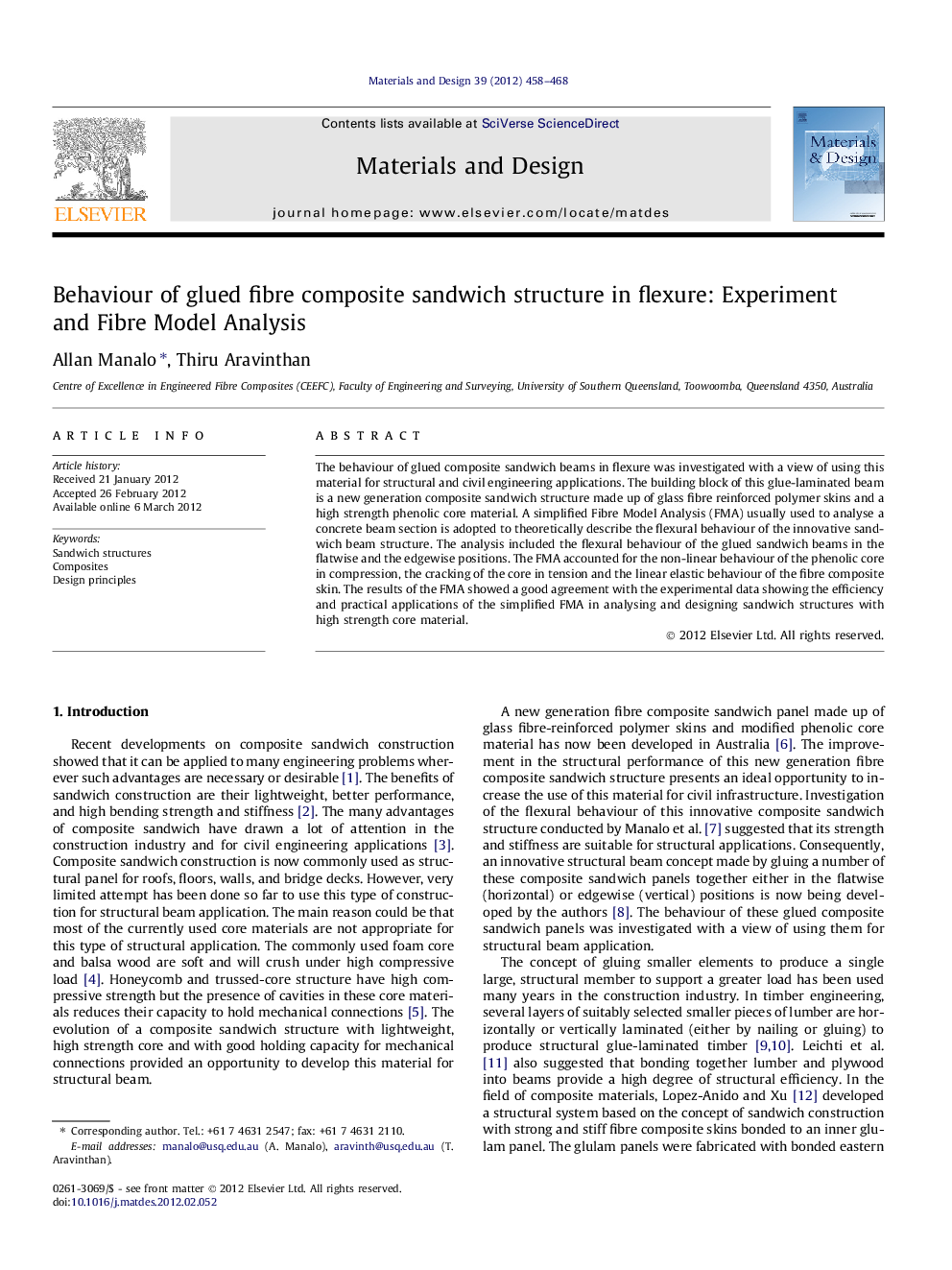| Article ID | Journal | Published Year | Pages | File Type |
|---|---|---|---|---|
| 830699 | Materials & Design (1980-2015) | 2012 | 11 Pages |
The behaviour of glued composite sandwich beams in flexure was investigated with a view of using this material for structural and civil engineering applications. The building block of this glue-laminated beam is a new generation composite sandwich structure made up of glass fibre reinforced polymer skins and a high strength phenolic core material. A simplified Fibre Model Analysis (FMA) usually used to analyse a concrete beam section is adopted to theoretically describe the flexural behaviour of the innovative sandwich beam structure. The analysis included the flexural behaviour of the glued sandwich beams in the flatwise and the edgewise positions. The FMA accounted for the non-linear behaviour of the phenolic core in compression, the cracking of the core in tension and the linear elastic behaviour of the fibre composite skin. The results of the FMA showed a good agreement with the experimental data showing the efficiency and practical applications of the simplified FMA in analysing and designing sandwich structures with high strength core material.
► Fibre Model Analysis is used to examine the flexural behaviour of sandwich beams. ► Theoretical prediction using FMA is in good agreement with the experiment. ► Using the constituent materials in FMA predicted accurately the beam’s behaviour. ► FMA can be used for analysing sandwich beams with high-strength core in flexure.
